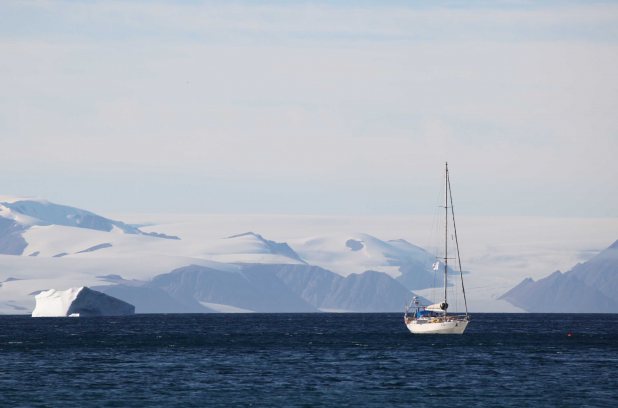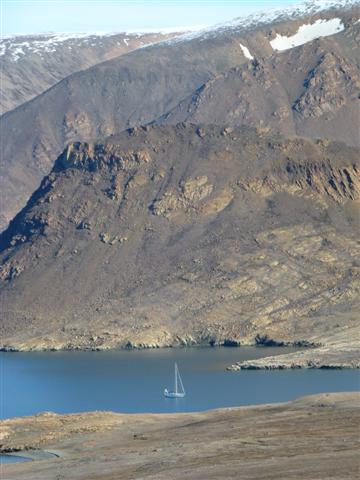Final thoughts from dry land
For two nights after I got off the boat, I woke up in the middle of the night to a swaying bed. It took me a while in my sleepy state to work out that I was in fact no longer on the boat, but on dry land.
Then just over a week after getting off the boat, the queasiness returned. This time it was not caused by phantom boat rolling, but by the news that we had already broken the record for low sea ice extent in the Arctic.
This was not quite the end of August. The low sea ice extent in the Arctic usually occurs closer to the end of September, so it’s likely that we will continue to set new records for minimum sea ice extent over the next few weeks.
We needed to see it not just on satellite maps, but more as local people do – from the shores of their communities, from their boats, from their hunting camps.
A significant part of our ongoing project to help map out a future for the last ice area consists of consulting with the people in communities around the area. This is their back yard, and what they have to say about it matters. We had hoped to be able to observe Arctic wildlife to take photos and moving images to show people the rich diversity of life in this sometimes bleak and barren looking area.
In this we were often disappointed – sometimes we would catch tantalizing glimpses of something, only to have it move away, or for the weather to force us away. Finally, on the last leg, life at the ice edge partly revealed itself, in the shape of a small herd of muskoxen, a pod of narwhals, and a herd of walruses.
We also managed to contribute in a small way to the research that needs to be done in the area. Sampling salt marshes and seawater for evidence of what life lives there now will help in assessing how the area changes, and in helping project how it is likely to change.
On the way back from the boat, I flew to Resolute Bay to Iqaluit next to a professor from Colorado – he is an oceanographer who had been aboard the coastguard ship the Larsen, and scientists working with him had the opportunity to sample the water in the fiord in northern Greenland where a massive ice shelf, twice the size of Manhattan, has recently broken off. He believed this area of water had been under ice since the industrial revolution.
That is the challenge we face – a vast area, little visited, little researched that is changing so quickly and so radically. Our visit there was a snapshot – our engagement there in the coming years must deepen both our knowledge, and the world’s knowledge of this increasingly important place.

